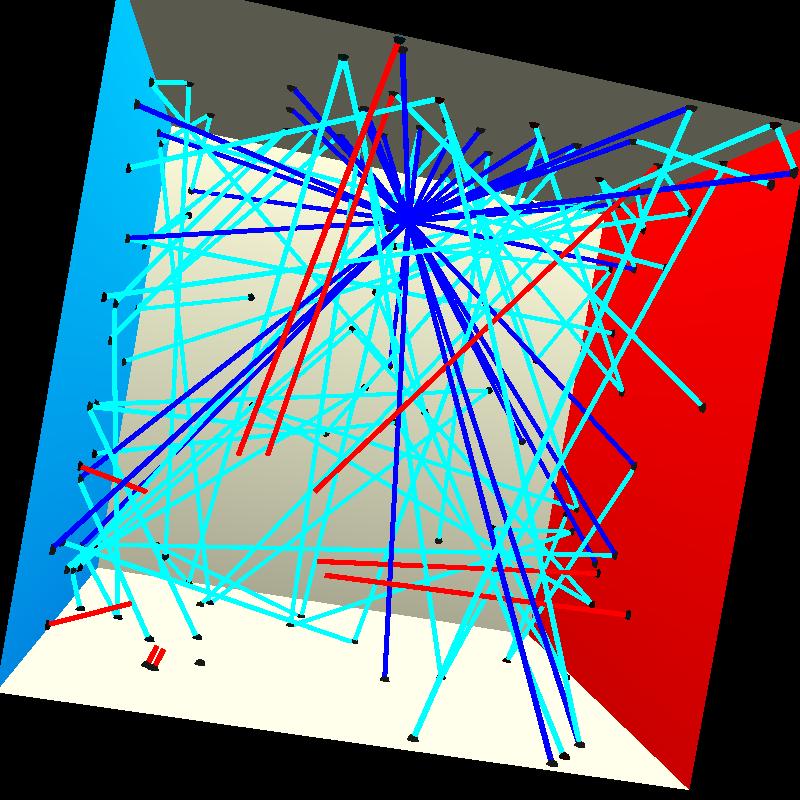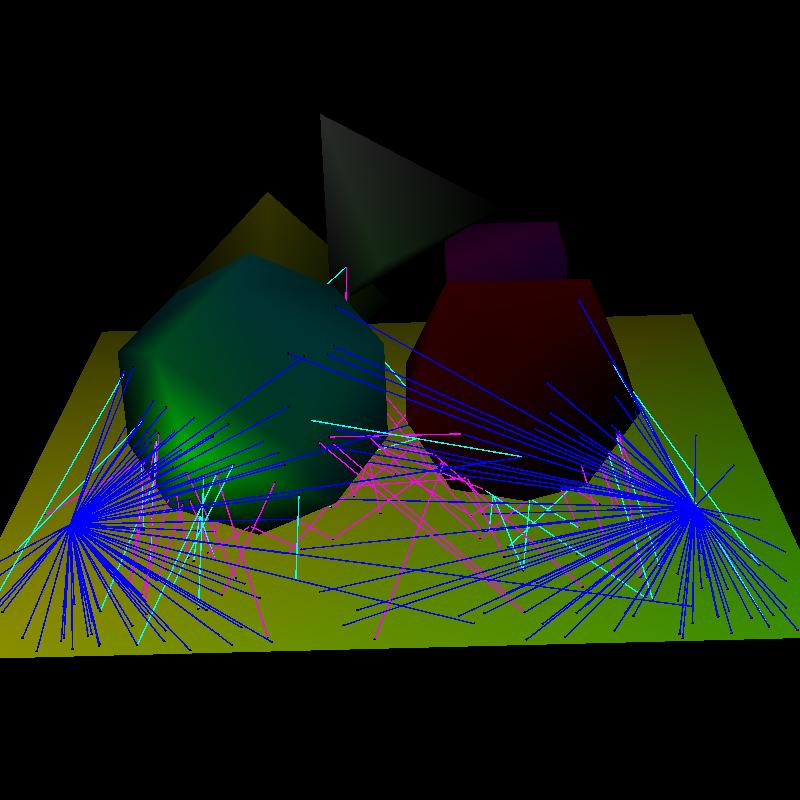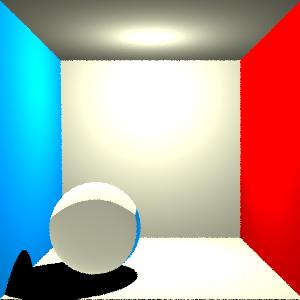Since each different light type works differently, there has to be a different photon emission step for each light type. I implemented this in the emitphotons.cpp file.
There are several interesting things to note about photon emission. First of all, there were two common functions that were used in multiple cases: one was to generate a random point on a circle, which was simply done using rejection sampling in the unit square. The other was to generate a random vector weighted by the cosine of the angle from a direction, which was done simply by uniformly sampling points on a sphere by phi and theta
Area lights use the above two functions to generate the position and direction, respectively. Point lights were uniformly sampled from points on a sphere by inverse sampling. Spotlight photons were sampled according to the cosine distribution function, as above.
Directional lights cause a bit of a headache because the effective power (relative to other lights) is dependent on the scene geometry. I did not choose to deal with this in any special way; powers were just set to be intensity divided by number of photons, just as for other lights. Photon positions were simply generated by generating a plane outside the bounding box of the scene. This plane was chosen to be perpendicular to the direction and tangent to the appropriate corner of the bounding box. Then, each other corner on the bounding box was projected onto the plane and points were uniformly sampled in the bounding circle of those projections.
The other utility function actually performs scattering and russian roulette, and is also used by the raytracing renderer. This Trace function first calculates the appropriate diffuse, specular, and transmissive powers and probabilities, according to Jensen01. Then, it randomly determines whether to reflect the incoming light (photon or ray) in a transmissive, specular, or diffuse manner according to these probabilities. I assumed that refracted rays would always undergo perfect refraction, but specular and diffuse rays were sampled according to the BRDF as specified in Jason Lawrence's course notes. Note that this function also must move the generated position a little bit off of the intersecting surface; otherwise floating point error will often cause subsequent traces to intersect the same spot.
To actually perform photon scattering, we iterate over all the emitted photons, determine if they intersect the scene, and call Trace on them if so to determine the appropriate values for a newly generated photon (or do not generate a photon if the photon is absorbed). The photons are recursively traced if appropriate, and the old photon stored if the intersecting material is diffuse.
A significant downside of the provided scene files is that materials do not necessarily conform to the conservation of energy constraint that the sum of the specular, diffuse, and transmissive coefficients are less than one. This causes significant problems for russian roulette, since a trace would never terminate. Therefore, I included a parameter to the Trace function that specifies an absorption probability (default 0.05). By scaling the diffuse, transmissive, and specular coefficients appropriately, this ensured that the trace would eventually terminate.

This is a visualization of the russian roulette process in the still life scene. Notice that one path actually underwent many diffuse (cyan) and specular (magenta) reflections before terminating.

|

|
| Jello Cube with Global Illumination Photon Map | Jello Cube with Caustic Photon Map and Global Map |
src/photonmap input/prism.scn output/caustic.jpg -resolution 200 200 -n 2000000 -r 500
|
src/photonmap input/prism.scn output/caustic.jpg -resolution 200 200 -n 2000000 -r 500 -caustic
|

|
| Cornell Box Photon Density Map |
Another visualization that I used heavily visualized not only the photons, but the paths they came from. This used the optional fields in the Photon data structure, and rendered the paths using cylinders of different colors. This system is totally unusable with any more than several hundred photons, however.

|  |
| Cornell Box Photon Visualization | Still Life Photon Visualization |




